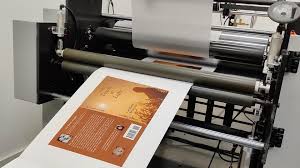We live in a time where swiping, scrolling, and clicking dominate our daily routines. Screens are practically extensions of our bodies—phones, tablets, e-readers, laptops. Everything is digital. So it’s no surprise that people occasionally wonder, “Do printed books still matter?”
The short answer? Absolutely.
The long answer? Well, it involves the feel of paper, the scent of ink, the rustle of turning pages, and the irreplaceable connection that print creates between author and reader. In an era overflowing with fleeting content, printed books are standing taller than ever—as premium, personal, and powerful storytelling vessels.
Here’s why the printed page still holds its ground—and in many ways, outshines its digital counterpart.
- Tangibility Matters: A Book You Can Hold Is a Story You Can Feel
There’s something deeply grounding about holding a book in your hands. The texture of the cover. The weight of the story. The moment your fingers brush across a powerful sentence you want to remember.
Printed books offer a physical experience that digital formats simply can’t replicate. When we touch and interact with a book, the story becomes more memorable, more real. Studies even show that readers retain more information when reading from paper than from screens.
It’s not just about reading—it’s about connecting.
- Books as Artifacts: They’re Meant to Be Kept, Shared, and Loved
You rarely lend someone your Kindle with a note saying, “This changed my life.” But with printed books, we gift, underline, dog-ear, and write little messages in the margins. They become personal heirlooms.
A well-read book tells a story beyond the story—it’s a diary of your experience as a reader. Highlighted lines, bookmarks from an old trip, a coffee stain from a long night of reading… These aren’t imperfections. They’re character. They’re evidence that the book lived in your life.
Printed books become keepsakes. And in a digital world, keepsakes mean more than ever.
- Screen Fatigue is Real (And Print Is the Perfect Escape)
Most of us spend hours staring at screens—work emails, social media feeds, YouTube rabbit holes. Our eyes are constantly processing blue light, and our brains are in overdrive.
That’s where print comes in as the antidote.
Reading a physical book allows your eyes to rest, your focus to settle, and your mind to escape in a more peaceful, immersive way. It’s the analog pause button in a hyper-connected digital world. It’s no surprise that many readers are returning to print simply because it feels better.
- Printed Books Carry Prestige (and Credibility)
Let’s face it—print still holds a certain status. It says, this work matters. There’s a level of legitimacy and permanence attached to a printed book that a digital file doesn’t quite command.
For authors, being published in print adds credibility and gravitas to their work. Whether you’re pitching media outlets, approaching bookstores, or simply sharing your book with friends and family, handing someone a physical copy just hits differently.
Printed books say: I’m real. I’m serious. I’m here to stay.
- The Bookstore Experience is Alive and Well
Despite predictions that physical bookstores would fade into nostalgia, they’ve proven surprisingly resilient—and even thriving in some communities. From independent shops to chains, readers still crave the joy of browsing shelves, flipping through first pages, and discovering stories they didn’t know they were looking for.
Printed books are the heart of this experience. No one walks into a bookstore hoping to buy a PDF. They want to walk out with something they can hold, flip through, and treasure.
- The Environmental Debate: It’s More Nuanced Than You Think
A common argument against printed books is their environmental impact. But here’s where it gets tricky—digital books aren’t as green as they seem. The devices we use to read them require energy to produce, often contain non-recyclable materials, and demand electricity every time they’re charged.
Printed books, on the other hand, can be sustainably produced. Many publishers now use recycled paper, eco-friendly inks, and responsible forestry practices. And once a printed book exists, it doesn’t need batteries, updates, or replacements. It can be passed down or resold for generations.
It’s not about one format being “better” than the other—it’s about making thoughtful choices. And for many, print still wins in the long run.
- Authors Deserve More Than Just Visibility—They Deserve a Legacy
Let’s get real: publishing digitally is fast and often free, but it also gets buried fast. With millions of new digital titles uploaded each year, staying visible is a serious challenge.
Print slows the process down—in a good way. It encourages intention, craft, and care. And once it’s out there, a printed book has a better shot at lasting impact. It sits on shelves, gets passed between friends, and can even be found decades later in libraries or used bookstores.
For authors, that’s not just visibility. That’s legacy.
- In a World of Noise, Print Is a Statement
We’re surrounded by digital noise: ads, notifications, pop-ups, algorithmic distractions. So when someone takes the time to sit down with a printed book, it sends a message:
This is worth my time. This is worth my full attention.
Printed books aren’t just containers of stories—they’re statements of value in a world that constantly pulls our focus away. And that’s powerful.
Print Isn’t Dead—It’s Premium
Printed books haven’t been replaced. They’ve been reframed. In a digital-heavy world, they’ve become the premium format—the choice of creators and readers who value presence, depth, and authenticity.
And as the tides of publishing shift, those who understand the value of physical books are leading a quiet but powerful renaissance.
Where Bluemount Publisher Fits In
If you’re a writer with a story to tell—or a reader who understands the charm of the printed page—you’re not alone. The team at Bluemount Publisher has seen firsthand how transformative printed books can be. They’ve worked with authors who wanted more than just another listing on a digital storefront. They wanted something they could see, hold, sign, and share.
While the digital world races ahead, Bluemount walks with intention—helping storytellers create lasting impressions through beautiful, tangible books. With the right guidance and expertise, printing isn’t just an option—it’s a statement.
And it’s one worth making.
Because in the end, when you write a book, you’re not just creating content. You’re creating something real. Something lasting. Something worth printing.



